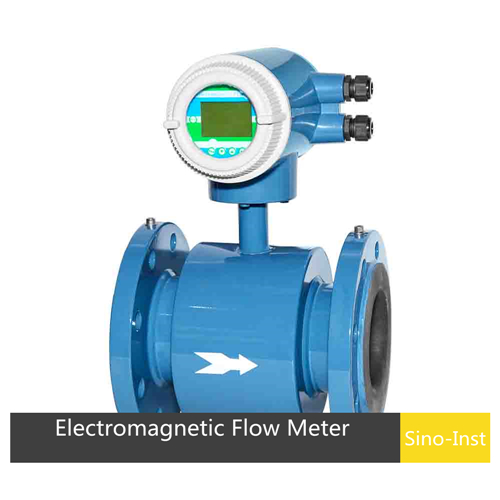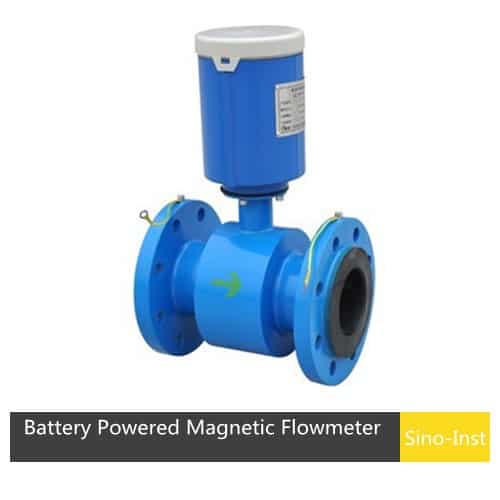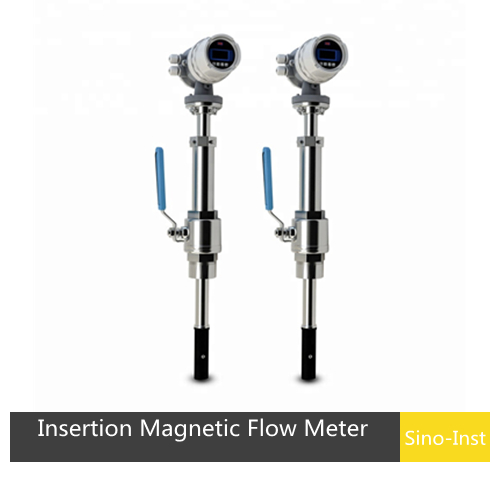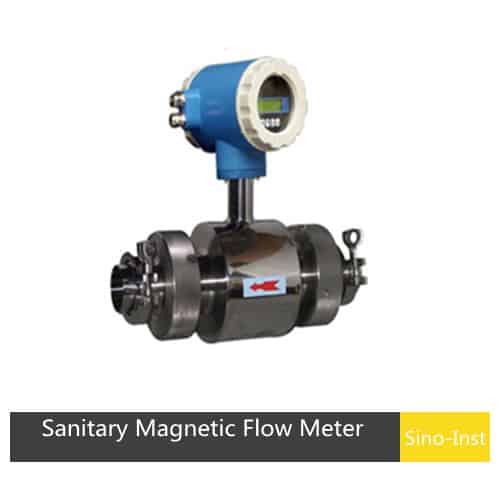Electromagnetic water flow meter is the flow meter for water flow rate measurement. In most industrial water supply pipes, 1 inch, 3 inch, and so on, need the inline flow measurement. Indicator outdoor and send the 4-20mA output, or RS485. In industrial waste water treatment, Magnetic flow meter measure the volume flow of conductive liquid and slurry in a closed pipe.
Electromagnetic digital flow meter works for: Domestic water. Industrial water. Raw water. Ground water. Urban sewage. Industrial wastewater. Pulp slurry, etc.
Diameter | DN6~DN3000mm |
| Accuracy | ±0.5% |
| Flow rate | 0.3~10m/s |
| Electrode | 316L (Suitable for domestic water, industrial water, raw water, underground water, sewage, etc.; not applicable to acid and alkali salt) |
| Lining material | Chloroprene rubber(CR), polyurethane rubber(PU) |
Electromagnetic Digital Water Flow Meter Features
- Measurement result will not be affected by change of density, viscosity, temperature, pressure and conductive rate
- Product with good anti-corrosion and abrasion resistance performance.
- Full digital process, strong anti-interference performance, operating reliable with high accuracy and wide range of flow rate
- Super low voltage EMI switch power supply, ensure fast response for voltage changes and good resistance on EMI
- LCD display could be Chinese and English, and other languages (Spanish, Japanese, Korean, French and so on).
- Manufactured with SMD devices and SMT technology, which provides high reliability circuits.
- With self checking and diagnosis function.
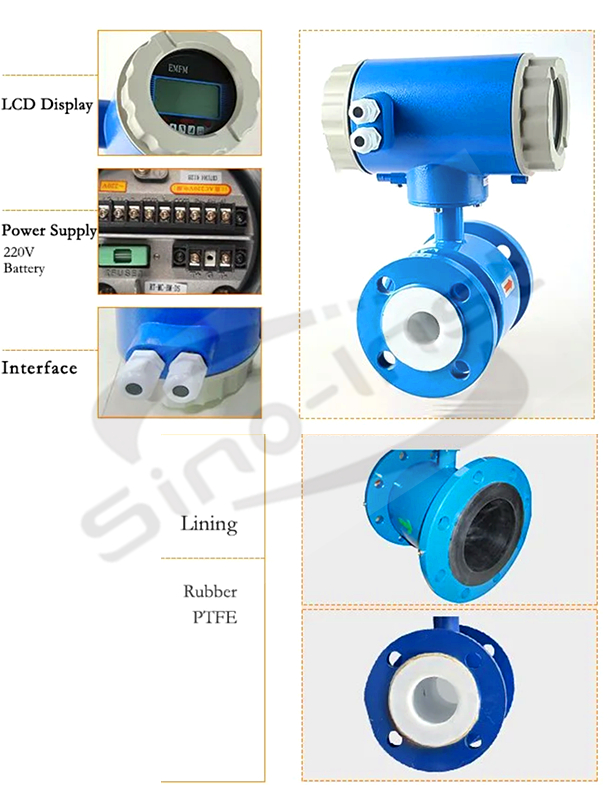
Electromagnetic Digital Water Flow Meter Specifications
| Main power | AC220V 50HZ / DC24V | |
| Power consumption | < 15W (And set with sensor supporting power consumption ) | |
| Display and push buttons | English and Chinese display can display the instantaneous flow, total flow and percentage of flow as well as alarm display, four thin-film touch nubs, which is used to data set. | |
| Accumulator | Forward total quantity, reverse total quantity | |
| Output signal | Analog output | Bi-direction with two ways, Isolation 0-10mA/4-20mA |
| Load resistor: 0-10mA; 0-1.5KΩ; 4-20mA; 0-750Ω | ||
| Frequency output | Forward & reverse flow output with frequency range set between 1-5000Hz.The external voltage must be lower than 35V and the max output and the max output current is 50mA when the transistor is turned on | |
| Alarm output | Two outputs from the collectors of photoelectric isolate transistors are for alarm signals. The external voltage must be lower than 35V and the max output current is 250mA when the transistor is turned on. Alarm status: Activates when the measured pipes are empty, the excitation circuits are broken or the volume of flow rate exceeds the value designed limits. | |
| Pulse output | For pulse output in forward and reverse flow measurement, upper frequency of pulse output can be up to 5000 CP/S relevant value of pulse is from 0.0001 to 1.0 M3/P. The width of pulse can be set to 20ms or squired wave from automatically. The collector of transistor with photoelectric is open circuited. The external voltage must be lower than 35 V and maximum output current is 250mA when the transistor is turned on. | |
| Accuracy | ±0.5% of the value displayed, ±0.3% or ±0.2% optional. | |
| Damping time constant | Continuous variable from 0-100 s (90%)can be selected by group | |
| Communication | RS232 ,RS485 or HART Communication are optional,with lighting resistance | |
| Power failure | An anti-failure clock is designed in the flow meter which can save the power failure records for 16 times (10 years) | |
| Nominal diameter | DN6~DN3000mm | |
| Nominal Pressure | 0.6~4.0MPa | |
| Main power | AC220V 50Hz /DC24V/3.6V | |
| Accuracy | ±0.5%, ±0.3% or ±0.2% are optional | |
| Output signal | Analog output, Frequency output, Alarm output, Pulse output | |
| Liner material | Neoprene, Urethane Rubber, Polysilicone Rubber, PTFE, F46, PFA | |
| Electrode Type | General type, scraper type and replaceable type | |
| Electrode material | SUS316, Hastelloy B, Hastelloy C, Titanium, Tantalum, Platinum-iridium alloy, Stainless steelcovered with tungsten carbide | |
| Medium temperature | -20ºC~+70ºC | |
| Ambient Temperature | -25ºC ~ +60ºC | |
| Ambient Humidity | 5~100%RH(relative humidity) | |
| Medium Electrical conductivity | ≥20us/cm | |
| Measuring Range | 1500:1,flow rate <15m/s | |
| Structure type | Integral type, remote type, submersible type, ex-proof type <15m/s | |
| Protection Class | IP65, IP67, IP68(optional) | |
| Ex-proof Mark | Exmd II CT4 | |
| Product Standard | JB/T 9248-1999 Electromagnetic Flowmeter | |
Electromagnetic Digital Water Flow Meter Applications
Electromagnetic Digital Water Flow Meter Order Guide
| SI-3101- | Note | ||||||||||||
| Diameter | DNXX | DN6~DN3000(mm) | |||||||||||
| Structure | F | Remote type (standard with 10m cable) | |||||||||||
| Y | Compact type | ||||||||||||
| Electrode | S | 316L | |||||||||||
| T | Titanium(Ti) | ||||||||||||
| D | Tantalum(Ta) | ||||||||||||
| C | Hastalloy C(HC) | ||||||||||||
| P | Platinum iridium alloy | ||||||||||||
| Lining material | X | Chloroprene rubber (CR) Suitable for tap water, | |||||||||||
| J | Polyurethane rubber (PU) Suitable for pulp, pulp, etc liquid | ||||||||||||
| E | Polytetrafluoroethylene (PTFE) | ||||||||||||
| A | PFA | ||||||||||||
| Body material | CS | Carbon steel | |||||||||||
| S4 | SUS304 | ||||||||||||
| Protection class | L0 | IP65(compact type) | |||||||||||
| L1 | IP67(remote type) | ||||||||||||
| L2 | IP68(remote type) | ||||||||||||
| Power supply | 1 | 110~240V AC | |||||||||||
| 2 | 24V DC | ||||||||||||
| 3 | Lithium battery(no signal output) | ||||||||||||
| Signal output | N | No output | |||||||||||
| N1 | 4-20m/pulse output | ||||||||||||
| Communication | H | HART protocol | |||||||||||
| R1 | MODBUS RS485 | ||||||||||||
| G | GPRS | ||||||||||||
| With grounding ring | 0 | Without grounding ring | |||||||||||
| 1 | With grounding ring | ||||||||||||
| Nominal pressure | D1 | DIN PN16 | |||||||||||
| D2 | DIN PN25 | ||||||||||||
| D3 | DIN PN40 | ||||||||||||
| D4 | DIN PN63 | ||||||||||||
| J1 | JIS 10K | ||||||||||||
| J2 | JIS 20K | ||||||||||||
| J3 | JIS 40K | ||||||||||||
| A1 | ANSI Class150 | ||||||||||||
| A2 | ANSI Class300 | ||||||||||||
| A3 | ANSI Class600 | ||||||||||||
| O | Others | ||||||||||||
| Cable length | /xx | Unit: m | |||||||||||
Amis
Thanks for your quick responce. This Insertion type mag flow meter really works well in our wastewater pipes.
How Electromagnetic Flowmeter works?
Magnetic flow meters use the principle of Faraday’s Law of Electromagnetic Induction to measure the flow rate of liquid in a pipe. In the magnetic flowmeter pipe parts, a magnetic field is generated, and channeled into the liquid flowing through the pipe. Faraday’s Law states that the voltage generated is proportional to the movement of the flowing liquid. A conductor moving through a magnetic field produces an electric signal within the conductor. And the singal is proportional to the velocity of the water moving through the field. As fluid flows through the magnetic field, conductive particles in the fluid create changes. This variation is used to measure and calculate the velocity of water flow through the pipe. When the fluid moves faster, more voltage is generated. The electronic transmitter processes the voltage signal to determine liquid flow.
Electromagnetic flow meter Working Principle
The operation principle of a magnetic flow meter or mag meter is based upon Faraday’s Law. Faraday’s Law states the voltage generated is proportional to the movement of the flowing liquid. The transmitter processes the voltage signal to determine liquid flow.

Electromagnetic flow meter advantages and disadvantages
Advantages of electromagnetic flowmeter
- The flow barrier of the Electromagnetic water flow meter is almost zero. Therefore this type of meter can be used to measure heavy suspensions. Including mud, sewage and wood pulp.
- Except for the straight tube length used by the Electromagnetic water flow meter, this flow meter has no head loss.
- Electromagnetic water flow meter is not greatly affected by upstream flow disturbance.
- Electromagnetic water flow meter is virtually unaffected by changes in density, viscosity, pressure, and temperature.
- Power requirements may be low (15 or 20 W), especially for pulsed DC types.
- Electromagnetic water flow meter can be used as a two-way meter.
- Electromagnetic water flow meter is suitable for most acids, alkalis, water and aqueous solutions. Because the selected lining material is not only a good electrical insulator, but also has corrosion resistance.
- Electromagnetic water flow meter is widely used in mud services. Not only because they are less blocking. And because some linings (such as polyurethane, neoprene, and rubber) have good abrasion or corrosion resistance.
- Electromagnetic water flow meter can handle extremely low flow.
Disadvantages of electromagnetic flowmeter
- Electromagnetic water flow meter can only be used for fluids with proper conductivity.
- The accuracy is only within the range of ± 1% within the flow range of 5%.
- The size and cost of the excitation coil and circuit increase disproportionately to the size of the tube hole. Therefore, the small-sized Electromagnetic water flow meter is bulky and expensive.
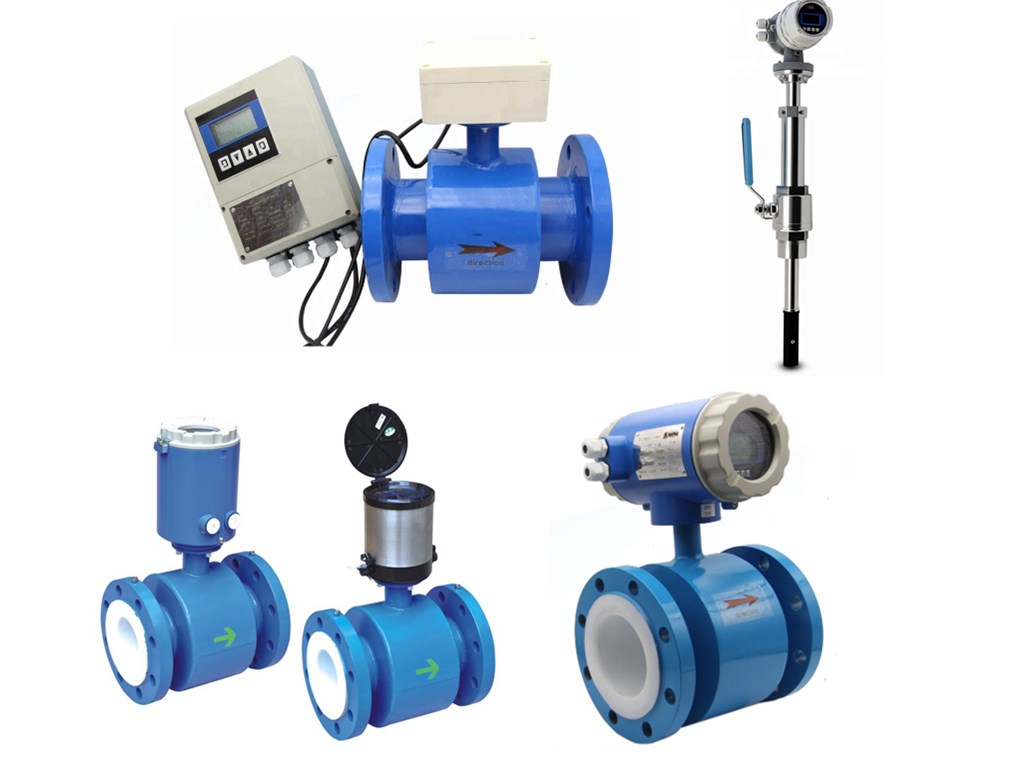
Best Technology Guide to Magnetic Flow Meters
A Magnetic flow meter, also called electromagnetic flow meter, mag flow meter, or magmeters. A magnetic flow meter is a volumetric flow meter that works with principle of magnetic technology. Magnetic flow meters do not have any moving parts. An electromagnetic flowmeter consists of two parts: Electrode (sensor) and Transmitter. Installation types of magmeters could be: Compact, remote, insertion.
Electromagnetic water flow meter Installation



1.Installation location
Avoid the magnetic objects and equipment with stong electromagnetoc field;
should installa the flow meter at ventilated location;
Avoid the location wherer ambient temperature above 50ºC and relative humidity above 90%;
The water flowmeter should be installaed at somewhere spacious;
The DH1000 series Digital Electromagnetic Water Flow Meter with RS485 Signal should be installaed behind pump and the value should installa at downstream.
2.Installa the flow sensor
Must to ensure the pipeline is fulled and without bubbles to keep the high accuracy;
The flow direction shoudl keep with sign on the body of flowmeter;
Ensure the double electrodes keep Horizontal;
If the medium is mixed by liquid and solid,Pls installa it at vertical to extend the working life of lining;
If the environment with shocked pls installa the bracket at both front and behind;
If the medium is pollution liquid,should installa the flow meter at bypass pipe and don’t interrupted when you on service;
3.Requirement of Straight pipe
The straight of pipe at inlet must more than 10×DN,Suggest 15DN;at outlet,the straight pipe at least 5×DN;
If at the upstearm of flowmeter,there are values,elbow,the straight must need 15×DN;
Pls installa the shut-off value at both front and behind of flow meter;
4.Installation advance
The installation location for you reference.
Techincal Support
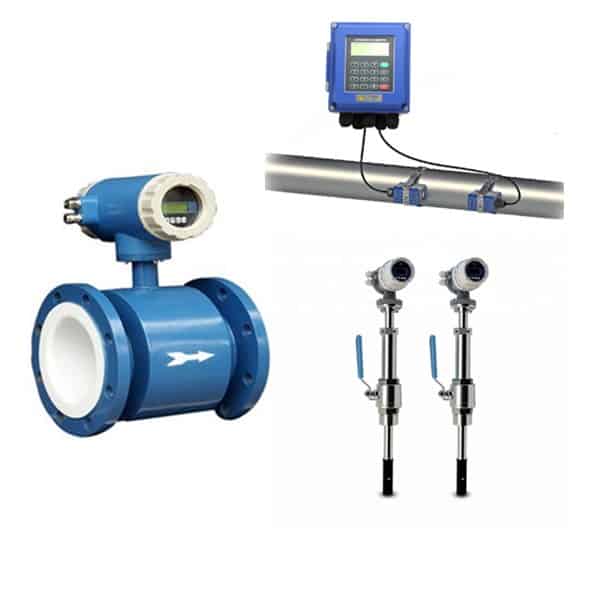
Wastewater flow meter
Wastewater Flow meters are flowmeters for water and wastewater treatment. Electromagnetic flow meters are suitable for open channel and underground industrial water pipes.
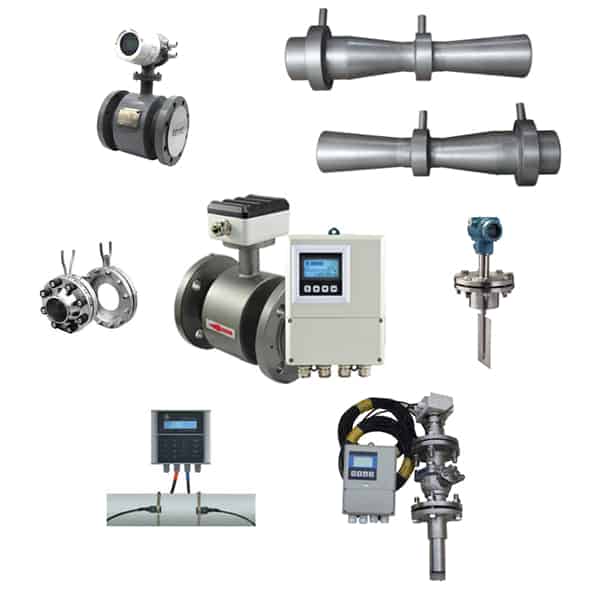
Potable Water
Potable water flow meter also called Drinking water. Potable water flow meters are important for Domestic industries. Accurate flow measurement is essential to cost-conscious drinking water and potable water system.
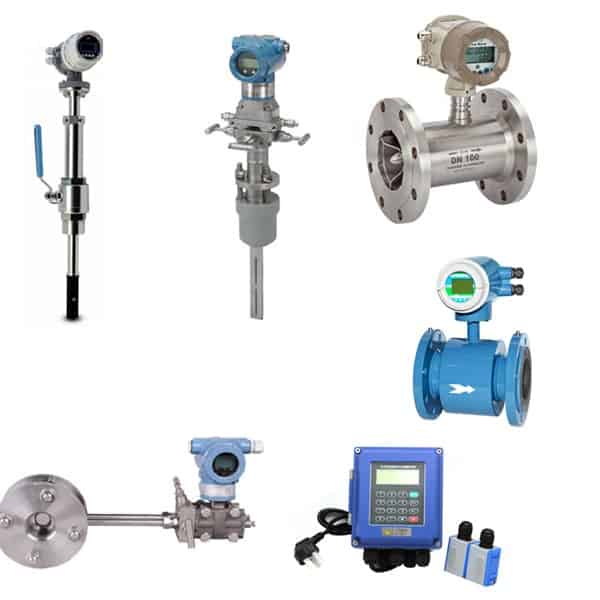
Digital Water Flow Meter
Digital water flow meter, is the electronic flow meter, which display the flow rate of water. Different Industrial liquid, different pipe for 1 inch, 2 inch, use different flow meters
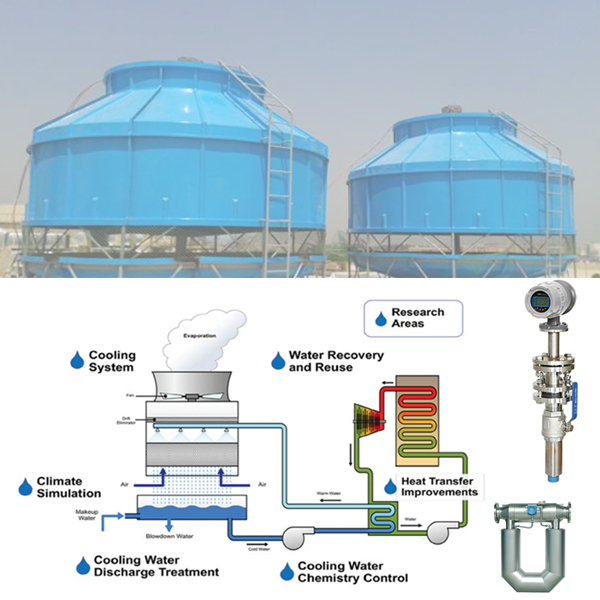
Cooling Water
The cooling water flow meter is used to measure the cooling water flow rate. Cooling water flow meters are commonly used in cooling water towers, circulation systems, pipes, tanks, and pumps.
Q&A
How does a magnetic inductive flow meter work?
The electromagnetic flowmeter is a flowmeter that measures flow according to Faraday’s law of electromagnetic induction.
Faraday’s law of electromagnetic induction, a fluid with a certain conductivity flows through the measuring tube, and the cutting line of force will induce an electromotive force E. The electromotive force E is proportional to the product of the magnetic flux density B, the inner diameter d of the measuring tube, and the average flow velocity V. The electromotive force E (flow signal) is detected by the electrodes and sent to the converter through the cable. After the converter amplifies the flow signal, it can display the fluid flow and output pulses and analog current signals for flow control and adjustment.
Where can you use a magnetic flow meter?
- General-purpose electromagnetic flowmeter is used in metallurgy, petrochemical, papermaking, textile, water supply and drainage, and sewage treatment. The general electromagnetic flowmeter in the industrial field is the main type of electromagnetic flowmeter. There is a range requirement for the conductivity of the measured medium, which generally cannot exceed its upper and lower limits.
- Explosion-proof type of electromagnetic flowmeter is used in places with explosive atmosphere. Due to the large magnetic current energy, the flameproof type is still the main type. In recent years, an intrinsically safe type, that is, a safe spark type electromagnetic flowmeter, has appeared in foreign countries, and the exciting power has been greatly reduced. Can be made into one type, all work in hazardous areas.
- Hygienic electromagnetic flowmeter is used in industries such as medicine, food, food and biochemistry. In terms of regular bacteria, easy to disassemble and clean, it must meet the relevant sanitary requirements.
- Water-proof electromagnetic flowmeter is used to be installed under the ground, and can withstand short-term water immersion.
- The submersible electromagnetic flowmeter is used to measure the flow when the free surface of the open channel or non-full pipe underdrain is free flowing. The sensor is under the open channel interception baffle and works under long-term immersion in water. The structure and use are different from general electromagnetic flow meters.
- Plug-in electromagnetic flowmeter is used for large-diameter electromagnetic flow sensor. The sensor is inserted radially from the opening of the pipe to measure the local flow rate to estimate the flow. Lower accuracy, but cheaper, suitable for control systems.
How does a flow meter work?
A flow meter works by measuring the amount of liquid, gas, or vapor flowing through or around a flow meter sensor. Flowmeter sensors work differently, but have the same end goal: to provide the most accurate and repeatable flow measurement for a specific application, whether it is process control, routine research activities, or semiconductor processing.
Flow meters measure volume or mass. The flow (Q) is equal to the cross-sectional area of the pipe (A) in the volumetric flowmeter, and the velocity (v) of the flowing fluid: Q = A * v. The mass flow rate can be expressed as follows: ṁ = Q ∗ ρ (where Q is the volume flow rate and ρ is the fluid density).
In many cases, especially in combustion, chemical reactions, or buying and selling gases, mass flow rate is a key consideration.
For more please refer to our Flow Meter Technologies.
-1.jpg)
